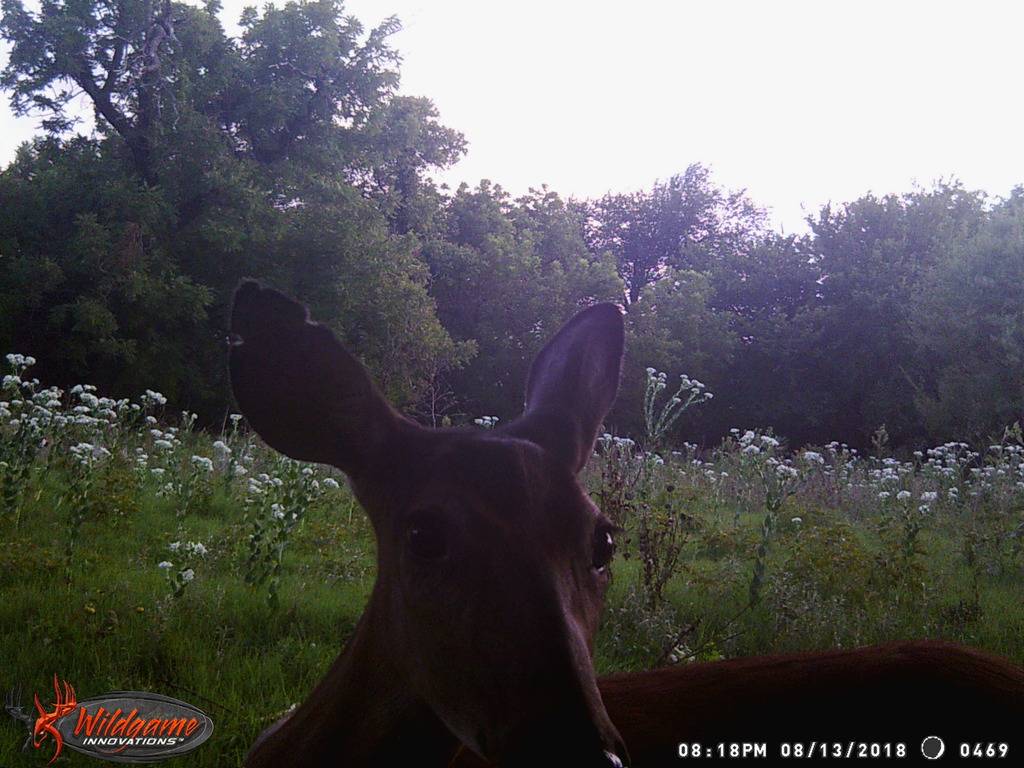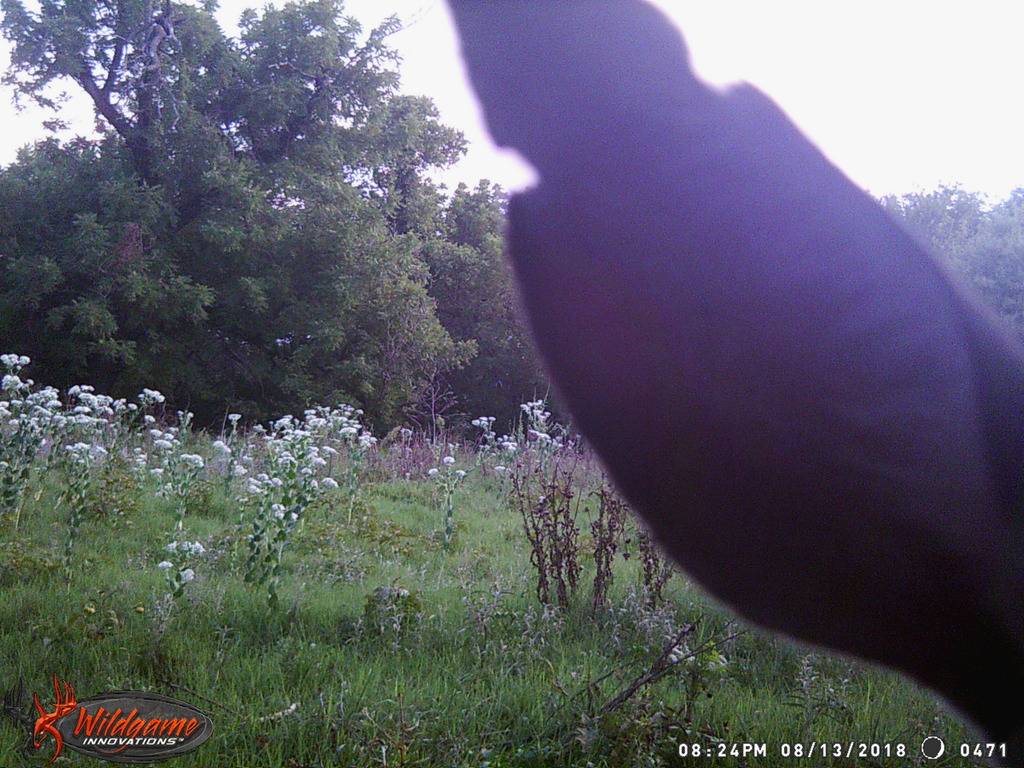You are using an out of date browser. It may not display this or other websites correctly.
You should upgrade or use an alternative browser.
You should upgrade or use an alternative browser.
This site may earn a commission from merchant affiliate
links, including eBay, Amazon, and others.
Some city-slicker bought a ranch and decided to ear-notch all the newborn calves...? 

What, did I do it wrong?Some city-slicker bought a ranch and decided to ear-notch all the newborn calves...?
I claim her. She’ll eat good.
We have a doe that visits the yard on occasion that has an ear notch. Don't know for sure, but always thought the way they bolt through the thick woods in a panic, they might get a locust tree thorn or something like that through the ear that results in a tear and a notch when it heals. Maybe a tick on the edge of the ear that fell off and healed?
Total speculation on my part.
Our yard doe with the notch, and a scar on her right quarter showed up the other day with twin fawns. She has always had a single fawn in the years past.
Total speculation on my part.
Our yard doe with the notch, and a scar on her right quarter showed up the other day with twin fawns. She has always had a single fawn in the years past.
RE: Twin DoesWe have a doe that visits the yard on occasion that has an ear notch. Don't know for sure, but always thought the way they bolt through the thick woods in a panic, they might get a locust tree thorn or something like that through the ear that results in a tear and a notch when it heals. Maybe a tick on the edge of the ear that fell off and healed?
Total speculation on my part.
Our yard doe with the notch, and a scar on her right quarter showed up the other day with twin fawns. She has always had a single fawn in the years past.
Do you have any knowledge as to whether multiple births in deer are identical or fraternal twins? And, if fraternal, whether they have the same sire?
I don't suppose it really matters, but I'm curious.
Back when I hunted on a DMAP where ODW biologists were involved in each property, we were told that does in their first, second and maybe their third year would have single fawns. Senior does would have twins, so the recommendation from the biologist was to shoot senior does and leave the young does. It was more typical for younger does to have buck fawns, and senior does to have twin does we were told.RE: Twin Does
Do you have any knowledge as to whether multiple births in deer are identical or fraternal twins? And, if fraternal, whether they have the same sire?
I don't suppose it really matters, but I'm curious.
That's the info I gathered. Our buck to doe ratio was 65-1 when we started, and when I left the DMAP it was 42-1. We killed 40 does a year and I was in the program for over 10 years.
As to being fraternal or identical, I'd have to refer to others. I don't have that answer.
Edit: I do know in humans, there is the possibility of two children, not twins by two sires and one doe at a single birth.
Watched Maury Povich a couple of times to prove it.
Last edited:
Interesting topic. It leads me to another question about twins. In many/most bull/heifer twins in cattle, the heifer will be a free marten and unable to breed, so I’m wondering if it is the same in deer?!? Inquiring minds...
Well hell, I guess I can just google it.....

Well hell, I guess I can just google it.....

Google to the rescue!
The answer is no. Does are not sterile when born a twin to a buck.
On the ear notch question, I’ve killed deer all over Texas and in Woods and Alfalfa counties in OK, and I’d bet at least 75% have had notched ears. I’ve always heard the rip them on brush and barb wire fences. FWIW
The answer is no. Does are not sterile when born a twin to a buck.
On the ear notch question, I’ve killed deer all over Texas and in Woods and Alfalfa counties in OK, and I’d bet at least 75% have had notched ears. I’ve always heard the rip them on brush and barb wire fences. FWIW
That actually raises more questions. I'm assuming that, as mammals, deer follow the same XX/XY paradigm as humans (please correct me if I'm wrong). As such, it's the sire, not the dam, that determines the sex of the child. How, then, does the age of the doe have anything to do with the sex of the child? I can see the quantity--older does releasing more ova--but the sex? I don't get it?Back when I hunted on a DMAP where ODW biologists were involved in each property, we were told that does in their first, second and maybe their third year would have single fawns. Senior does would have twins, so the recommendation from the biologist was to shoot senior does and leave the young does. It was more typical for younger does to have buck fawns, and senior does to have twin does we were told.
That's the info I gathered. Our buck to doe ratio was 65-1 when we started, and when I left the DMAP it was 42-1. We killed 40 does a year and I was in the program for over 10 years.
As to being fraternal or identical, I'd have to refer to others. I don't have that answer.
Edit: I do know in humans, there is the possibility of two children, not twins by two sires and one doe at a single birth.
Watched Maury Povich a couple of times to prove it.
I'm genuinely asking how, not doubting you. The question really is interesting. If you don't have the answer, I'd love to wait for you to talk to those who know--it's genuinely fascinating, and it has implications in game management (shooting young does early increases buck population, shooting older does would reduce doe--and total--population). Obviously, that statement would depend upon the degree to which a species is, or is not, monogamous.
Anyhow, fascinating question. Do you know, or have anybody you can ask?
ETA: I know fraternal twins can be to the same sire, or multiples. I have very good friends in the former category; fraternal twins simply require the release of two fertile ova, both of which are fertilized, without regard to the number of (potential) sires. Humans are more monogamous than whitetails, though--or so I understand--hence the question.
Similar threads
Join the conversation!
Join today and get all the highlights of this community direct to your inbox. It's FREE!
- Curated content sent daily, so you get what's interesting to you!
- No ads, no large blocks of text, just highlights for easy digest
- It's all totally free!
Enter your email address to join:
Thank you for joining!
Already
a member? Click here to log in










